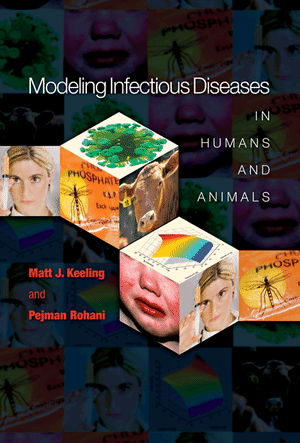|
In this chapter, we consider how
seasonally varying parameters act as a forcing mechanism and examine
their dynamical consequences. For the most part, we will use measles as
a prototypical directly transmitted infectious disease. We demonstrate
how such temporally forced models allow us to better capture the
observed pattern of recurrent epidemics in contrast to unforced models,
which predict oscillations that are damped toward equilibrium (see
Chapter 2).
The programs 5.1-5.3 can either model the epidemic for a fixed set of
parameters (in which case the output is the level of susceptible and
infected against time) or can generate the type of bifurcation diagrams
seen in this chapter by sweeping though a range of parameter values (in
which case the output is the parameter and the level of susceptible and
infected individuals at one point each year).
Programs:
Program 5.1
|
Page 160
|
SIR
model with sinusoidal forcing
|
Program 5.2
|
Page 171
|
SIR
model with corrected term-time forcing
|
Program 5.3
|
Page 184
|
SIR
model with sinusoidal births
|
Program 5.4
|
Page 186
|
Rabbit
Hemorrhagic Disease model
|
|


